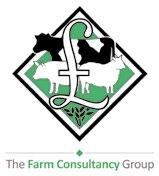
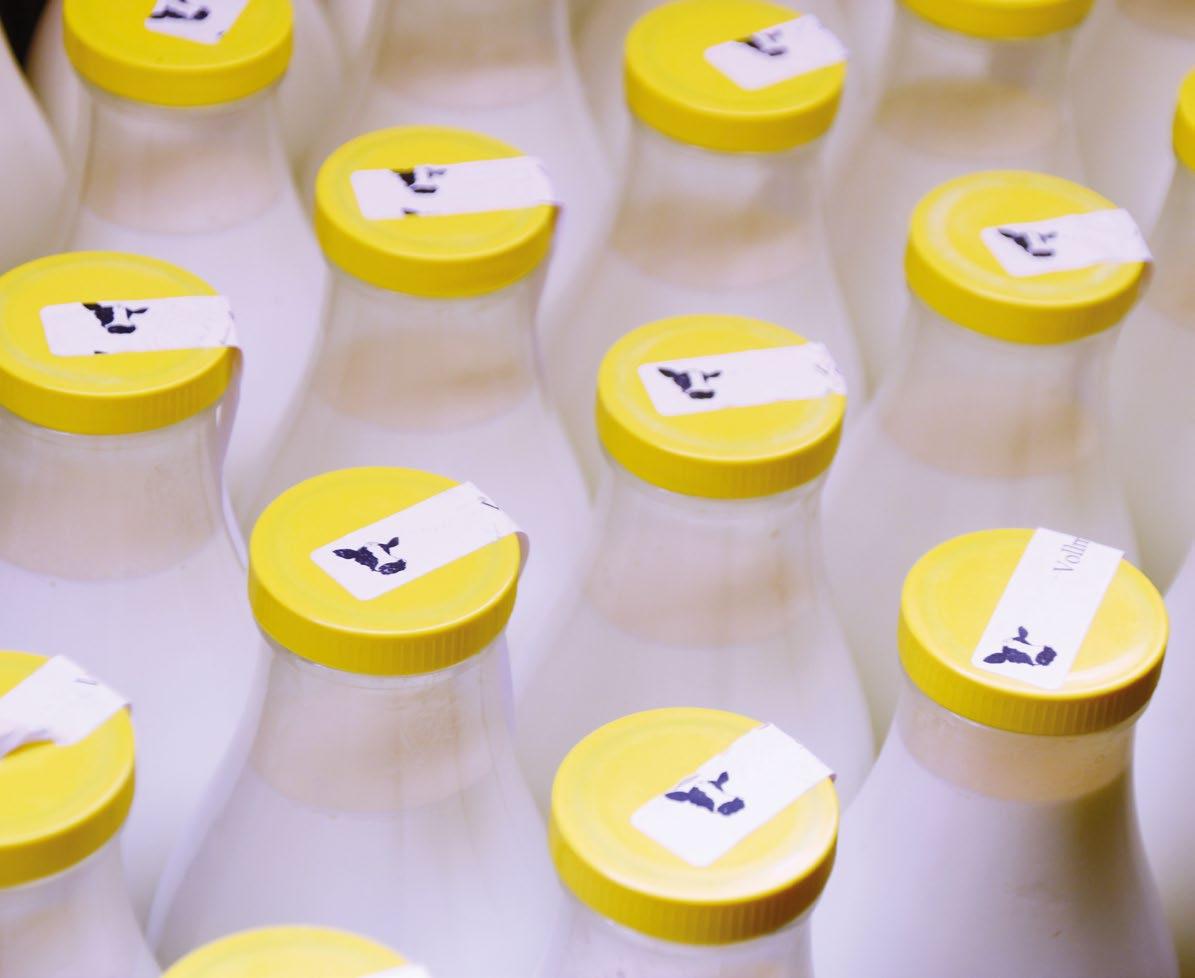
Milk Cost of Production Report 2022 - 2023 Rural
Dan Heal
Welcome
We are delighted to bring you our Milk Cost of Production Report 2023. Milk prices of 50 pence per litre may seem a distant memory, but as much as the numbers change, the trends taken from benchmarking your business can allow your business to weather the more difficult periods as well as take advantage in the good times.

The details that stand out
We saw a 56% year on year increase in milk income driven by milk buyers competing for supply over the Summer and Autumn 2022 period, bringing milk income per cow up by £1,309. This followed through into some useful price increases for dairy at the high street level, over and above the general 8%-10% inflation seen in the economy.

Cost increases were quick to follow, with feed costs increasing by £471 per cow, variable costs (including fertiliser) increasing by £174 per cow and power and machinery costs increasing by £212 per cow. Labour costs reduced due to a lack of supply, meaning business owners were left picking up the slack and working incredibly hard. However, after all of the volatility over the year, dairy farming fared well. All farms in the sample made profits on a comparable farm profit basis, with the average being £914 per cow. Property repairs increased as we saw some cash available to make some badly needed reinvestment on some farms.
Looking back over a 5-year period, the year to 31 March 2023 is the only year where milk income alone has comfortably covered the cost of production. This is a clear signal of supply and demand being out of balance, with commodity markets desperately trying to increase production.
What to expect
Summer 2023 has taken a very different path, with milk prices falling as quickly as the increases were seen last year, and some costs remaining stubbornly high. UK daily milk deliveries are running ahead of the previous year and the cost-of-living crisis has led to consumers trading down from branded products or reducing consumption. The supply and demand imbalance has reversed and there is now too much milk.
Of course, changing milk production on a country, and even worldwide level is far from simple. The taps cannot simply be turned on and off, it takes time. Volatile prices will be here to stay for the medium term as supply and demand takes time to rebalance, there will be some losses made in the short term, but the efficient producer is still able to make a living in the long term.
Conclusion? Keep benchmarking
It is vital to benchmark your business and ensure that you are making savings where you can in the current climate. It is also important to budget for the future, the comparable farm profit basis excludes tax, interest and rent in order to fairly benchmark farms. These costs cannot be completely ignored and can easily catch you out. With tax, for example, due to fall 9-10 months after the end of the year for the dairy farmers surveyed.
Proactive advice has never been more important, have you futureproofed your business?
Dan Heal Bradley Causey
07970 890772 01392 351327


daniel.heal@om.uk
bradley.causey@om.uk
2
Milk Cost of Production Report 2022 - 2023
Bradley Causey
The sample farms analysed include organic, all milk bonuses, a higher proportion of manufacturing than liquid contracts, plus more aligned contracts than would be the norm across the whole of the UK.
What a difference a year makes, and I am referring to the 12 months to March 2023!
This time last year we were warning our clients of rapidly rising income from significantly rising milk prices with the potential to increase profits significantly. With forage in short supply after a dry summer in 2022 and the feed to milk price favourable to fill the forage gap with bought in feeds, milk production increased with more cows being retained in herds and higher yields resulting from the purchased feed.

The shortage of feed raw materials, due to the War in Ukraine, resulted in concentrate prices increasing significantly with an overall feed cost increase of £471 per cow or 127% of the 2021-22 profit per cow. Purchased feed was 37% of total costs.
The gap between the top and bottom 10% gets ever wider. Those herds which were higher yielding and had higher cow numbers, took full advantage of the higher milk price and tended to be in the top 10%, though not exclusively. All year-round calving herds tend to be the higher yielding and were more flexible in adapting to the milk price increase. Retaining more cows could see a quicker response to increased concentrate feeding due to the different stages in lactation within the herd. Block calved herds tend to be fixed management systems focused on getting cows back in calf, not maximising production, when cows are in peak milk.
What’s in store for 2023-24?
It is going to be polar opposites of 2022-23, both financially and physically. The high yielding herds will experience the biggest decreases in income and profit due to lower milk price. Their ability to cope with a rapidly declining income, with a slower declining cost base, will be based on how cashflow was managed in the last 12 months. How was the surplus cashflow spent?
The biggest tax bills will need to be paid in January 2024 when some of the lowest milk prices of the last 18 months will be paid. Has debt been reduced with this extra cash, or has it all been invested in depreciating assets?
Forage stocks have been replenished with some mediocre quality forages, due to weather conditions. Cows are in poorer condition going into the winter as they have milked well off abundant grass on lower cake levels due to the less favourable feed milk price ratio.
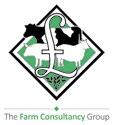
Though costs are falling, the cost base is still 30% higher now than two years ago due to electricity costs doubling, feed is
still 40% higher and most of fertiliser used in the 2023 summer having been brought forward at double current market prices.
Overall profits are projected to decline rapidly back to 2021-22 levels. With interest rates 5%+ higher (eg. £25k extra interest on £500k borrowed, not accounted for in this comparable analysis), Basic Payment Scheme (BPS) declining, and extra capital investment required to comply with water and environmental regulations, there is a cash squeeze looming in the next 12 months for all businesses but especially those who have not managed the cash profits from last year. Mistakes in business in the next 12 months will be punished severely financially. Low performing cows will become loss making. Surplus dairy replacements will become a short-term luxury. Under used or overpowered machinery using up expensive capital at 10% HP rates will start hurting cashflows when it comes to replacing them.
Looking ahead post 2023-24
The ability to cope with the extreme volatility in the market, which is outside one’s control, will determine how successful dairy farm businesses will survive and be more sustainable in the future.

The successful dairy businesses are the ones that:
1. Benchmark and know their costs of production and how their KPIs compare to the best
2. Are involved in discussion groups and are open to improvement
3. Are willing to change and adapt to new ideas and technologies
4. Plan and budget forward - physically and financially
5. Are continually focused on improving people
6. Minimise overhead costs
7. Know their market and supply that market accordingly System of milk production doesn’t determine success as is seen from the graph on page 10.
How many of the above points are you practicing in your business? Of those you are acting on, is there room for improvement? If you are serious about successfully achieving your dairy business’ longer term goals, what can you do differently in the next 12 months to improve your chances of success?
Gerard Finnan Annabel Hole 07976 426420 07980 294816
3 Milk Cost of Production Report 2022 - 2023
Gerard Finnan Annabel Hole
gerardfinnan@fcgagric.com annabelhole@fcgagric.com
Key points
1. The average total comparable cost of milk production in the year to 31 March 2023 was £3,182/cow compared to average milk income received of £3,610/cow.
2. The total comparable cost of milk production for the year to 31 March 2024 is projected to be £3,007/cow against projected milk income of £3,014/cow.
3. Milk prices rose rapidly through 2022/2023 leading to an additional £1,299/cow of income, a 56% increase.
4. Milk income exceeded total cost of production by £428/ cow as demand outstripped supply during 2022/23. Markets are more balanced in 2023/24 and we return to milk income being approximately equal to total cost of production, a position seen in four of the last five years.
5. Milk income is expected to decrease by £596/cow to £3,014 as prices continue to fall. Aligned producers remain sheltered from these falling prices as cost of production models return to use.
6. Feed costs are expected to decrease by £174/cow as prices reduce and feed rates are cut due to sufficient forage stocks and reduced milk price to feed price ratio.
7. Variable costs are expected to reduce due to the fall in fertiliser prices, although these are still an increase from 2021/22 levels. Forward purchases at higher prices are seen for many producers during 2022/23.
8. Power and machinery costs are expected to fall as a result of reduced fuel prices. This is partially offset by increasing repair and depreciation costs as machinery prices continue to increase.
The basis
9. Profitability during 2022/23 increased to £914/cow against a 5 year average of £369/cow as milk prices increased. Cost tracker contracts paid a premium to keep up with market conditions as demand outstripped supply.
10. Profit during 2023/24 expected to decline to £415/cow, with falling milk prices being offset by reduced costs of key inputs. A return to the normal of the last five years expected to be seen.
11. The top 10% of producers during 2022/23 produced higher yields at 9,727 litres, spending £203/cow more on feed than the bottom 10%. In times of high milk prices, output drives profit, these businesses need to remain resilient as milk prices fall.
12. Whilst finance costs and tax are excluded from the data to make farms comparable, these will have a huge impact on businesses as we see interest rates at their highest level for 15 years and tax bills due for our sample during January 2024 being based on a highly profitable year for most. Advice will be key to manage these changes.
13. Although removed from the top 10% vs bottom 10% statistics, the performance of organic herds was variable, with some producers achieving profits within the top 10% of conventional farms and some organic producers achieving below average profits.
In order to understand and interpret the results of the survey, it is important to set out the basis upon which these figures have been produced, specifically:
1. The sample consists of Old Mill and Farm Consultancy Group clients who derive their income mainly or solely from milk sales, across a variety of farming systems.
2. All farms have a 31 March year end.
3. In order to make the businesses comparable, rents, interest payments, drawings, tax and capital expenditure have been excluded from the figures and
a labour charge of £30,000 has been included per full time partner/director. Basic payment scheme has also been excluded from the income. It should be noted that depreciation has been included in these figures.
4. The projection for 2024 has been calculated by looking at actual costs incurred for this financial year to date along with national trends.
4
Milk Cost of Production Report 2022 - 2023
Whole sample - actual results compared with projected results
5 2021/2022 2022/2023 Projected for 2023/2024 Difference Herd size 250 303 290 (13) Yield per cow (litres) 6,763 7,906 7,931 25 £/cow £/cow £/cow £/cow Milk income 2,311 3,610 3,014 (596) Non-milk income 360 486 408 (78) Total income 2,671 4,096 3,422 (674) Purchased feed 694 1,165 991 (174) Variable costs 428 602 566 (36) Labour (paid + unpaid) 489 467 555 88 Power & machinery 511 723 686 (37) Administration 112 132 130 (2) Property repairs 66 93 79 (14) Cost of production (2,300) (3,182) (3,007) 175 Comparable farm profit (CFP) 371 914 415 (499)
Milk Cost of Production Report 2022 - 2023
“Output increases as milk prices rise, healthy profits are made. Retaining these profits is vital for business security as profitability declines over the current year.”
Whole sample Comparable Farm Profit
Key points
1. Milk income expected to fall by £596/cow as the effect of milk price cuts filters through. There is a return to a market split between aligned contracts and nonaligned contracts.
2. Feed costs seeing a 68% rise as concentrate price rapidly increased. Milk price to feed price ratio made it cost effective to feed concentrates to replace forage over the summer drought leading to increased quantities fed and higher milk output.
3. Variable costs expecting to drop back reflecting falls in
fertiliser prices, although the full effect is unlikely to be seen until 2024/25 with early purchases still at high prices.
4. Profits expected to decline to £415/cow, which is £46/ cow above the 5 year average of £369/cow. Whilst it feels very different on farm now compared to 2022/23, current trading conditions are returning to the normal.
6 Purchased feed Variable costs Labour (paid + unpaid) Power & machinery Administration Property repairs
0 1,000 1,500 2,000 2,500 2021/2022 Purchased feed Variable costs Labour (paid + unpaid) Power & machinery Administration Property repairs Total income £4,096 Milk income £3,610 Comparable farm profit (CFP) 500 3,000 3,500 4,000 2022/2023 Total income £3,422 Milk income £3,014 Projected for 2023/2024 4,500 Milk income £2,3111 Total income £2,671
£/cow Milk Cost of Production Report 2022 - 2023
Milk Cost of Production Report 2022 - 2023
2022 - 2023 : Top 10% by retained profit per litre vs Bottom 10%
7 Top 10% Bottom 10% Difference Herd size 405 186 (219) Yield per cow (litres) 9,727 6,369 (3,358) £/cow £/cow £/cow Milk income 4,812 3,143 (1,669) Non-milk income 571 597 25 Total income 5,384 3,740 (1,644) Purchased feed 1,512 1,309 203 Variable costs 711 574 137 Labour (paid + unpaid) 528 531 (3) Power & machinery 777 871 (94) Administration 88 127 (39) Property repairs 100 142 (42) Cost of production (3,716) (3,553) 163 Comparable farm profit 1,668 187 (1,481)
“Larger, higher yielding herds were more suited to the market conditions of 2022 - 23, and maximised profit. These systems typically perform well in times of high prices, although have high cost bases for when prices fall.”
Top 10% vs Bottom 10% Comparable Farm Profit
8 0 1,000 1,500 2,000 2,500 Top 10% unpaid) Total income £3,740 Milk income £3,143 profit (CFP) 500 3,000 3,500 4,000 Total income £5,384 Milk income £4,812 -500 4,500 5,000 Bottom 10% 5,500 6,000 Purchased feed Variable costs Labour (paid + unpaid) Power & machinery Administration Property repairs
£/cow
“Seeing a result for every pound spent is critical, the top 10% and bottom 10% have similar cost structures but much higher income is seen by the top 10%.”
Milk Cost of Production Report 2022 - 2023
Cost structure, Top 10% vs Bottom 10%
Key points
1. The top 10% received £1,669/cow more for their milk, producing significantly more litres in times of high prices.
2. There was a difference of £163/cow in the costs of production between the top 10% and the bottom 10%, with the gap closing further from the £693/cow seen in 2021/22 and £1,097/cow seen in 2020/2021.
3. Costs are consistent for the top 10% and the bottom 10%, with the top 10% increasing variable costs and output to exploit higher milk prices.
4. The average comparable farm profit for the top 10% was 23.86p/litre compared with 2.72p/litre for the bottom 10%.
5. The average yield per cow is significantly higher for the top 10% at 9,727 litres compared to the bottom 10% at 6,369 litres, but there is a huge range within these with the top 10% producing anywhere from 6,445 litres/ cow to 13,534 litres/cow. The bottom 10% produced between 4,567 litres/cow and 9,186 litres/cow.
6. The top 10% increased their spend on concentrates, spending £203 more than the bottom 10% by adapting
to market conditions and producing more milk. As supply has now increased to meet demand, controlling these costs will be key to future profitability.
7. Combined labour and power and machinery, or ‘Cost of Doing Work’ is £1,402 for the bottom 10%, compared to £1,305 for the top 10%. The top 10% increased their spend during times of high milk prices and generated a return by doing so.
8. The top 10% has a herd on average of 219 head larger than the bottom 10%, with larger herds more able to adapt and exploit the market.
9. Most of the top 10% are higher yielding herds which calve all year round, this is not always the case and is due to the high milk price. Will these herds adapt and be resilient to the fall in price of 2023/24?
10. There is a variety of farming systems in the bottom 10% of herds, showing that farming efficiently relies on the farmer and is not based on the system which is run. Strong performance is not a given of any particular system.
9 0 1,000 2,000 3,000 4,000 Milk income Purchased feed Labour (paid + unpaid) Administration Cost of production Bottom 10% Top 10% £/cow Non-milk income Variable costs Power & machinery Property repairs Comparable farm profit 5,000 Bottom 10% Top 10 %
Milk Cost of Production Report 2022 - 2023
Farm profitability by £/cow vs farm profitability by pence/litre (ppl) shown by calving pattern
10 10.00 5.00 20.00 15.00 25.00 30.00 2,500 2,000 1,500 1,000 500 0 Autumn calving Spring calving All year round calving Comparable farm profit (CFP) £/cow
Milk Cost of Production Report 2022 - 2023
CFP ppl
Key points
1. Market conditions have suited higher yielding systems, this is not always the case.
2. The trendline shows that as CFP/litre increases, so does CFP/cow. However, this is not a linear relationship as yields fall when focusing on maximising margin/litre and is more profound in times of high milk prices.
3. Spring calving herds often make the most profit on a pence/litre basis, showing their ability to produce cheap milk. This does insulate them against lower milk prices although means they miss out on higher profits per cow in times of higher milk prices.
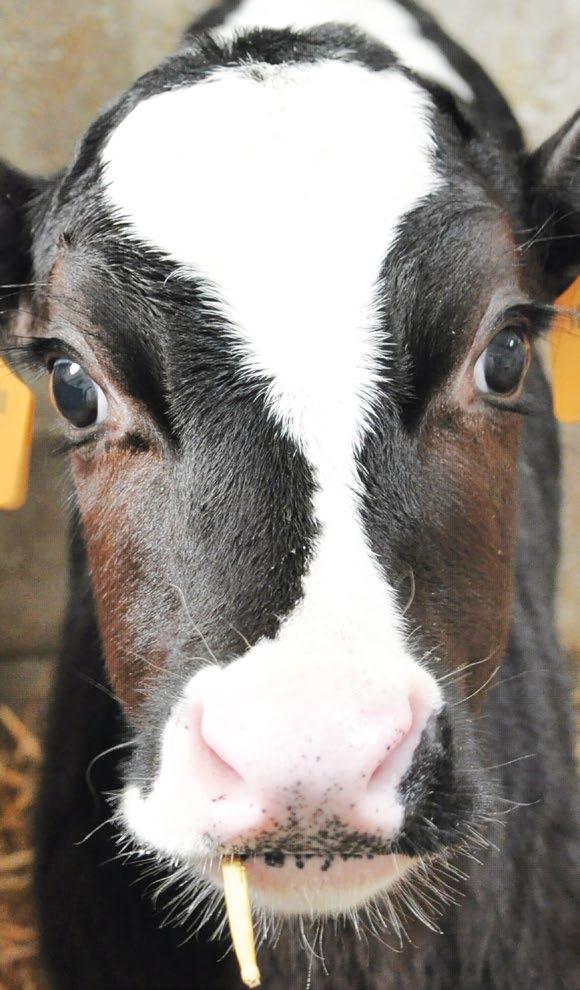
4. As yields climb, profitability per cow increases, marginal litres have been worth producing during 2022-23 but this needs continual review.
5. Profitability has increased dramatically for all farms, although the large gap between the top 10% and bottom 10% remains.
6. All farms have shown a profit on a CFP basis helped by an average milk price of 48.85ppl against average costs of 42.41ppl.
Have you thought about claiming Research & Development (R&D) Tax Credits?
Activities in the agricultural sector that could potentially qualify for claims include:
• Robotics and AI
• The use of drones
• Adapting existing machinery
• Creating bespoke software
• Developing drugs for disease management
• Creating farming techniques using less space, such as indoors under LED lighting
• Developing disease resistant crops
• Pest control
• Energy and water efficiency
• New soil treatments or processes
• Odour control or irrigation.
We regularly help many of our clients put together successful R&D claims, and we’ll work with you from the beginning of your claim through to its completion.
enquiries@om.uk
11
Milk Cost of Production Report 2022 - 2023
Contact
Old Mill
Exeter
Leeward House
Fitzroy Road
Exeter Business Park
EX1 3LJ
+44 (0)1392 214635
Chippenham
Unit 2
Greenways Business Park
Bellinger Close
SN15 1BN
+44 (0)1225 701210
Wells Bishopbrook House Cathedral Avenue
BA5 1FD
+44 (0)1749 343366
Yeovil
Maltravers House
Petters Way
BA20 1SH
+44 (0)1935 426181
Also at Frome Livestock Market, Standerwick
enquiries@om.uk | om.uk
Financial experts, Old Mill, offer specialist farming accountancy, tax and financial planning services.
The content of this report is for general information only. It should not be relied on and action which could affect your business should not be taken without appropriate professional advice. Please contact your usual Old Mill or Farm Consultancy Group contact or local office.
The Farm Consultancy Group
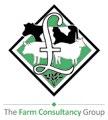
Midwest Consulting Ltd Suite 1, Security House, 3 Oxford Road, Yeovil, Somerset, BA21 5HR
+44 (0)1935 850093
midwest@fcgagric.com | fcgagric.com











